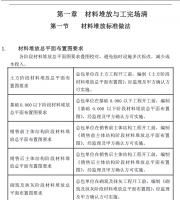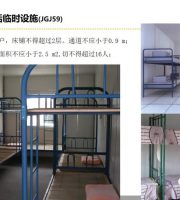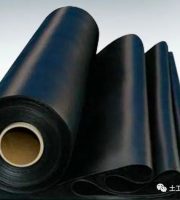Raking, shaping, and regeneration: First, use a heating device to heat and soften the asphalt pavement, then use the device’s own raking device to loosen and shape the pavement, while adding regenerant, and then use a roller to compact.
Thermal bonding between joints and layers.
Moreover, the period of major and medium repair (such as highway milling and covering engineering) is generally around 3 years, and after 3 years, various degrees of diseases (such as cracks, ruts, etc.) will occur, According to our company’s tracking survey of several domestic roads constructed using geothermal regeneration technology in recent years, if the maintenance and construction of geothermal regeneration are carried out once in about 3-4 years of road use, and to some extent, the occurrence of overloading can be controlled, it can ensure that the large and medium-sized repair period of the road is delayed by 5-7 years, and the economic benefits are self-evident.
After the 1990s, expressways built successively have entered the period of major and medium maintenance, with a large number of excavated and milled asphalt mixtures being abandoned, which on the one hand causes environmental pollution, on the other hand, it is a waste of resources for a country that is extremely lacking in high-quality asphalt, and the massive use of new stone materials and quarrying can lead to serious ecological environmental damage such as forest vegetation reduction, soil erosion, and other serious environmental damage.
At the same time, improve the cross slope and drainage conditions of the pavement.
It is now widely used abroad.
Greatly reducing the transportation volume of old and new materials; 100% recycling of existing pavement materials and on-site repair of the pavement; ★ Disadvantages of on-site thermal regeneration: The maximum regeneration depth is usually 6 cm; Unable to remove old mixtures that are already unsuitable for regeneration, with limited gradation adjustment; The problem of weak subgrade and base layer cannot be solved.
According to surveys and relevant foreign data, under normal road driving conditions (such as no overloading, etc.), the design life of a newly constructed road is generally 15 years, and generally enters the major and medium repair period after 5-7 years of use.
2.
Generally, the quality of new asphalt mixture is controlled within 30% of the recycled mixture.
First, the original asphalt pavement is heated and softened to facilitate raking, and then the raked asphalt pavement is fully mixed, followed by paving and rolling.
According to the asphalt recycling standards issued by the ARRA Association, the surface recycling process is most suitable for maintenance operations such as road surface finishing (shaping) and improving driving quality.
Re mixing and regeneration: First, use a heating device to heat and soften the asphalt pavement, then use a milling machine to mill the old asphalt layer, then add a certain proportion of regenerant and then add new materials for adjusting the mixing.
It can also be well applied to the treatment of mild pits, oil spills, ruts, washboards (wrinkles), pushing (displacement), cracks, and other road surface diseases.
The addition rates of various materials are determined based on the performance analysis of the original asphalt pavement and its laboratory mix design, and in accordance with the corresponding mixture specifications.
Raking and shaping technology: scarifying and resurfacing the old pavement to eliminate ruts and diseases on the original pavement.
The on-site thermal regeneration of asphalt pavement means that 100% of the original asphalt pavement regeneration is completed on site.
2.
Mixing the loosened material through a mixer can obtain a uniform mixture, resulting in good improvement of the road surface, as the scraper behind the mixer affects the mixing of materials and the improvement of the road surface and slope.
Repaving and regeneration: First, use a heating device to heat and soften the asphalt pavement, and then mill the old asphalt layer.
The difference is that the milled asphalt material is directly paved, and then a new layer of asphalt mixture is paved on top of it, and then compacted with a roller.
According to the process used, on-site thermal regeneration can be divided into three types, namely, raking, shaping, resurfacing, and remixing.
This process can pave a very thin asphalt wearing layer, so when the ordinary overlay method is not applicable, the resurfacing method can also be applied.
.
The thermal regeneration of asphalt pavement restores the performance of aging asphalt by adding a recycling agent to adjust the chemical components of aging asphalt in the old asphalt pavement, while adding a small amount of fresh asphalt mixture to adjust the gradation of the original asphalt mixture to achieve the regeneration effect of asphalt pavement.
After mixing, collect and discharge the mixture onto the paver for paving, and finally use a roller to compact it.
3.
★ Advantages of on-site thermal regeneration: on-site repair of pavement by recycling existing materials; Complete the regeneration overlay at one time; Fast, economical, environmentally friendly, and saves raw materials; Low cost: reduce the comprehensive cost of construction period, transportation costs, energy and raw materials by 20-50%; Short construction time and fast open traffic have little impact on public transportation; Can complete construction such as regeneration overlay, resurfacing, and reshaping; Eliminates the inherent processing problems of traditional methods.
Local thermal regeneration: This regeneration method is to use a combined thermal regeneration unit for asphalt pavement to complete on-site thermal regeneration and repair of asphalt pavement.
This process is not suitable for solving problems such as skid resistance, shoulder collapse, edge cracks, fatigue cracks, discontinuous cracks, or pavement strength.
The original pavement materials are 100% utilized, eliminating the need to move waste materials and waste storage sites, which can reduce environmental pollution; The ability to change individual mixture components in order to give the best mix ratio of asphalt mixtures; It can be quickly regenerated locally, and open up road traffic with minimal traffic interference as the project progresses.
New asphalt mixture and recycling agent shall be added according to the required proportion.
1、 Overview: Currently, China’s highway construction is developing rapidly, with an annual investment scale of over 200 billion yuan.
The aging of asphalt pavement mainly refers to the reduction of lightweight components in its asphalt and a small amount of loss of stone materials.
2、 Comparison of basic technologies for geothermal regeneration: 1.
1.
Pavement resurfacing process: Pavement resurfacing is a process of scarifying the original pavement, paving a new material layer on it, and then compacting the two material layers simultaneously.
This process is used to restore pavement friction, improve cross slope, eliminate ruts, and improve pavement strength.




